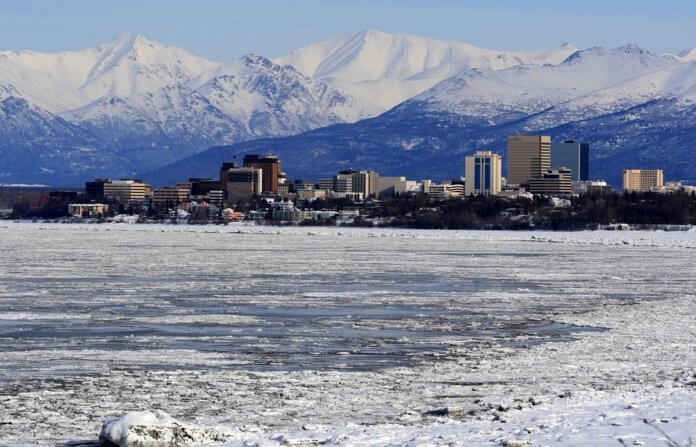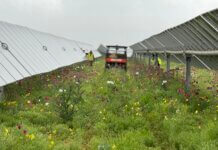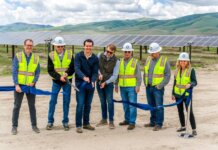More than 300 local governments have now met national benchmarks for encouraging the growth of solar and removing barriers to market development. These governments have each received designation under SolSmart, a national program launched in 2016 that helps make it faster, easier and more affordable for local governments to go solar.
SolSmart has now achieved its goal to designate at least 300 local governments as SolSmart Gold, Silver or Bronze, for a total of 328 communities and counting.
SolSmart is led by The Solar Foundation and the International City/County Management Association and is funded by the U.S. Department of Energy’s Solar Energy Technologies Office. All designated communities have met national criteria to prove they have streamlined local procedures to make it easier for homes and businesses to install solar energy systems. SolSmart provides intensive technical assistance at no cost to help communities meet these goals.
The 328 SolSmart designees include cities, counties, small towns and regional organizations in 40 states and the District of Columbia, representing 82 million people. One in four people in America now lives in a SolSmart-designated community. More information on these communities and examples of their solar achievements can be found here.
“All across the nation, local governments are leading the way toward sustainable economic growth,” says Andrea Luecke, president and executive director of The Solar Foundation. “SolSmart is a high-performing, breakthrough program that has already helped more than 300 communities turn their goals and the demands of their constituents into reality, working with them to reduce carbon emissions, lower energy costs, create jobs and build more resilient infrastructure. With over 18,000 communities in the U.S., we are excited to help hundreds, if not thousands, more reap the benefits of solar energy and compatible technologies like storage.”
The actions that SolSmart communities have taken help reduce soft costs, which are the non-hardware costs that today represent roughly 65% of the cost of solar installations, the SolSmart partners say. SolSmart helps local governments streamline permit approvals, review planning and zoning guidelines, facilitate group purchase campaigns, and improve solar financing options.
Anchorage, Alaska, became the 300th community to achieve SolSmart designation after the city installed Alaska’s largest solar array, located at the William A. Egan Civic and Convention Center. The first SolSmart designations were awarded in 2016 and included Kansas City, Mo.; Milwaukee; Minneapolis; Philadelphia; Hartford, Conn.; and others.
Some of the most recent designees include Durham, N.C.; Elkhart County, Ind.; San Jose, Calif.; Doylestown, Pa.; Stevens Point, Wis.; Mountain Iron, Minn.; Miami Lakes, Fla.; Decorah, Iowa; and Haddonfield, N.J., among others.
“For years, state and local governments have been leading the way on solar energy adoption,” comments Abigail Ross Hopper, president and CEO of the Solar Energy Industries Association. “Programs like SolSmart can improve local permitting practices and cut unnecessary costs, making it much easier for American families and businesses to go solar. We congratulate the hundreds of communities that are stepping up to make solar affordable and accessible.”
Of the 328 communities, 129 have been designated SolSmart Gold, indicating they have reached the program’s highest level of achievement. All Gold-designated communities have reduced permitting turn-around times to three days or fewer for rooftop solar projects.
An additional 75 communities have achieved SolSmart Silver designation, while 124 have achieved SolSmart Bronze. Nearly one-fourth of all designees (79 in total) started out as Bronze and then worked with the SolSmart technical assistance team to improve local programs and practices and move up to Silver or Gold designation.
“Philadelphia is proud to have been designated a SolSmart Gold City by the U.S. Department of Energy for our efforts to remove barriers to solar energy growth,” says Philadelphia’s mayor, Jim Kenney. “Solar helps us create jobs and lower our carbon footprint. We are committed to a 100 percent renewable energy future, and solar is a key piece of the puzzle to get us there.”
Among the 328 designees, some noteworthy achievements include as follows:
- 189 communities have set up Web pages with detailed information on how members of the public can go solar;
- 226 have ensured that zoning ordinances allow rooftop solar installations in all major areas without excessive restrictions or barriers;
- 108 have set up group purchase campaigns, providing savings for residents and helping the solar industry reduce customer acquisition costs;
- 95 have an online permitting submission option, speeding up approvals for installations; and
- All 328 designees have established a set of unique solar goals to help drive continual improvement in their local solar market.
One of the program’s linchpins for success was that communities competed to receive on-the-ground technical assistance from SolSmart advisors, trained staff who live and work in the region for approximately six months. The advisors work across local and state boundaries to help communities share ideas and achieve solar energy goals.
“The SolSmart advisor program has allowed the Great Plains Institute and our partners to mobilize local resources for its largest cohort, which encompasses three states in the Upper Midwest and includes communities of all sizes in metro and rural areas,” notes Brian Ross, senior program director at the Great Plains Institute. “These resources and technical assistance are invaluable to busy city staff as they address the unique puzzle of how solar development fits into the fabric of their community and enables them to make progress on critical clean energy goals.”
Throughout the month of October, the SolSmart communities are planning events, announcements and other activities to highlight their solar achievements.




